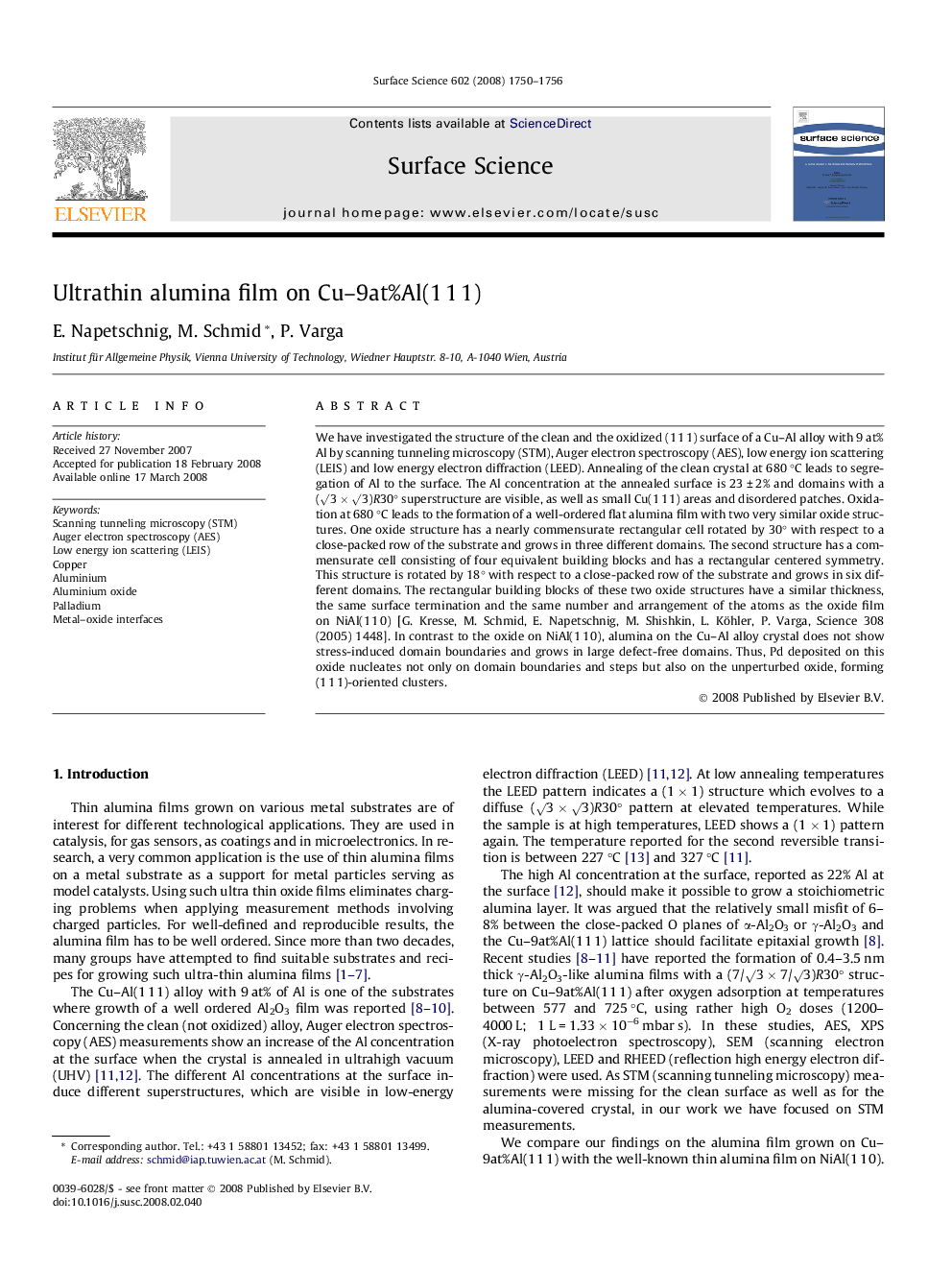| Article ID | Journal | Published Year | Pages | File Type |
|---|---|---|---|---|
| 5424683 | Surface Science | 2008 | 7 Pages |
We have investigated the structure of the clean and the oxidized (1 1 1) surface of a Cu-Al alloy with 9 at% Al by scanning tunneling microscopy (STM), Auger electron spectroscopy (AES), low energy ion scattering (LEIS) and low energy electron diffraction (LEED). Annealing of the clean crystal at 680 °C leads to segregation of Al to the surface. The Al concentration at the annealed surface is 23 ± 2% and domains with a (â3 Ã â3)R30° superstructure are visible, as well as small Cu(1 1 1) areas and disordered patches. Oxidation at 680 °C leads to the formation of a well-ordered flat alumina film with two very similar oxide structures. One oxide structure has a nearly commensurate rectangular cell rotated by 30° with respect to a close-packed row of the substrate and grows in three different domains. The second structure has a commensurate cell consisting of four equivalent building blocks and has a rectangular centered symmetry. This structure is rotated by 18° with respect to a close-packed row of the substrate and grows in six different domains. The rectangular building blocks of these two oxide structures have a similar thickness, the same surface termination and the same number and arrangement of the atoms as the oxide film on NiAl(1 1 0) [G. Kresse, M. Schmid, E. Napetschnig, M. Shishkin, L. Köhler, P. Varga, Science 308 (2005) 1448]. In contrast to the oxide on NiAl(1 1 0), alumina on the Cu-Al alloy crystal does not show stress-induced domain boundaries and grows in large defect-free domains. Thus, Pd deposited on this oxide nucleates not only on domain boundaries and steps but also on the unperturbed oxide, forming (1 1 1)-oriented clusters.
